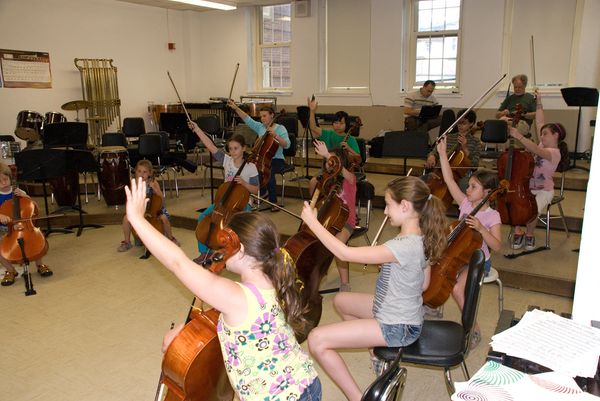
All string instruments present a convoluted layout of half-steps and whole-steps. It is not unusual for students to be playing for several years and still get stuck in the confusing maze of sharps, flats and naturals. If not taught the truth about scales and modes, they will quickly come up with their own associations and apply them globally.
A common example of this is a cello student who associates the natural sign with his second finger. This would include the assumption that sharp signs are for the third finger. When it comes time to learn the lower strings, complete meltdowns can occur.
This is why, as soon as possible, it is good to begin teaching half-steps and whole-steps – on the keyboard. A roll-up keyboard is indispensible for this task, even more useful than the real thing, because one can slip a piece of (movable) paper under it and, demonstrate where key signatures come from (more about this in a future post).
What follows is an introductory music theory lesson about intervals. This material needs to be reviewed, anchored, and expanded upon over time.
Set Up
On a keyboard, using a pencil, write the note names on the keys – only one octave of C to C.
Drill
(It is important that students play only with one finger so as not to introduce more confusion)
Ask the student to play every single note from C to C – all the white and black keys, then tell them it is the Half-Step Scale.
Once they get it, ask them to play it again as ask what is the name of the scale they just played. (save the word chromatic for a few years down the road).
Ask them how many half-steps do they think it would take to make a whole step – get out your pie charts if necessary.
Then, ask them to play a whole step scale – easier said than done, but don’t do it for them! They will be inclined to play all the white keys.
If confusion sets in, ask them to play one note, then only touch the next, play, touch, etc. This will guide them through the dicey land of the three black keys.
Then ask the student what is the name of the scale that you just played? (they may be too fried to remember).
Answer: Whole-step scale.
Go back and forth between the two scales until they are clear.
Then, have them play only white notes, ask them if it sounds familiar, and tell them it is the C major scale.
Ask:
- Is the C Major Scale made up of all half-steps, all whole-steps, or some of both?
- Are there more half-steps or more whole-steps?
Then have them repeat out loud 5 times while looking at the keyboard:
E and F and B and C. E and F and B and C. E and F and B and C. E and F and B and C. E and F and B and C.
Anchor it one more time by having them play the C major scale, then pop the question:
Where are the half steps in the C Major Scale?
Answer: E and F and B and C.
Rinse, and repeat as necessary.

